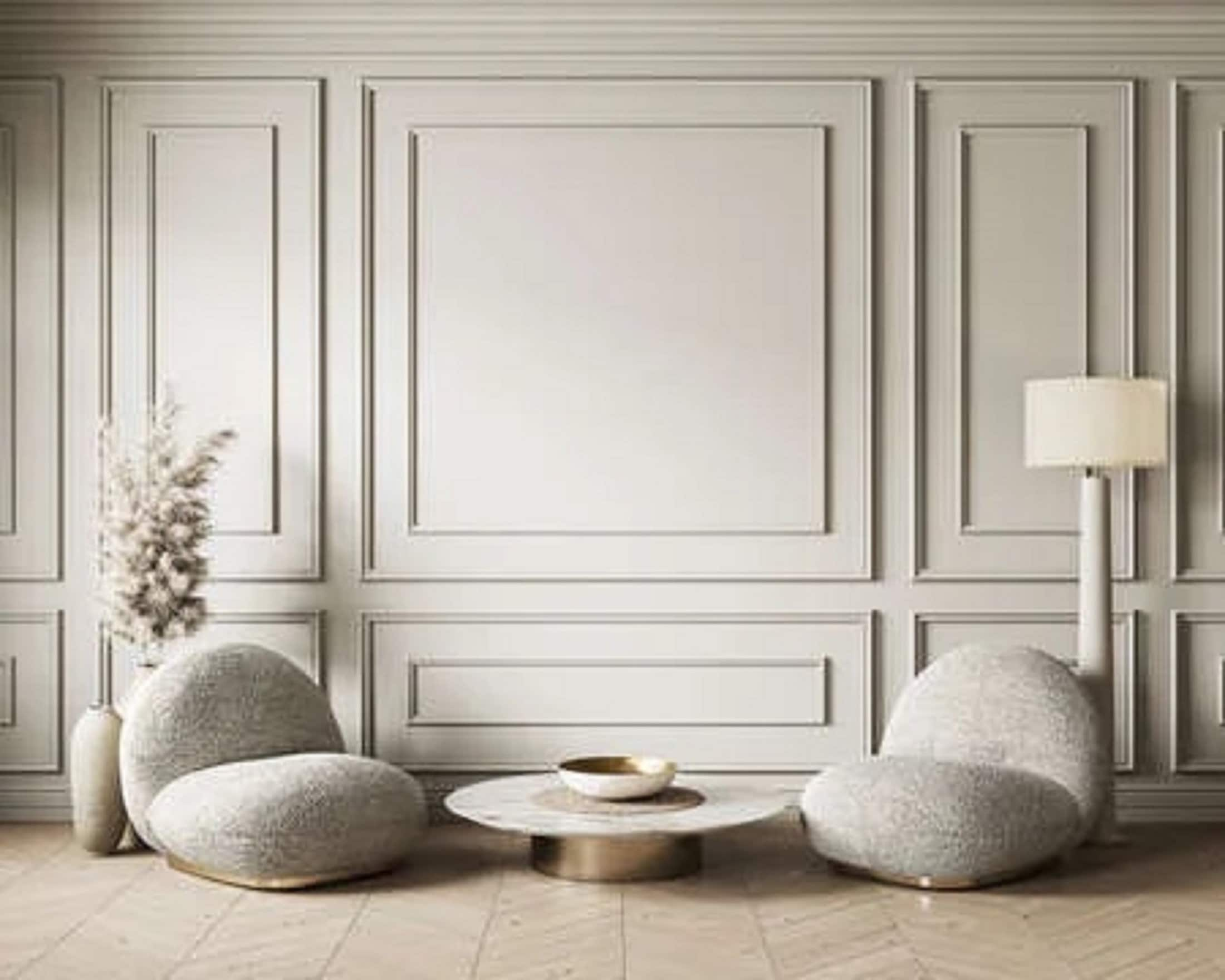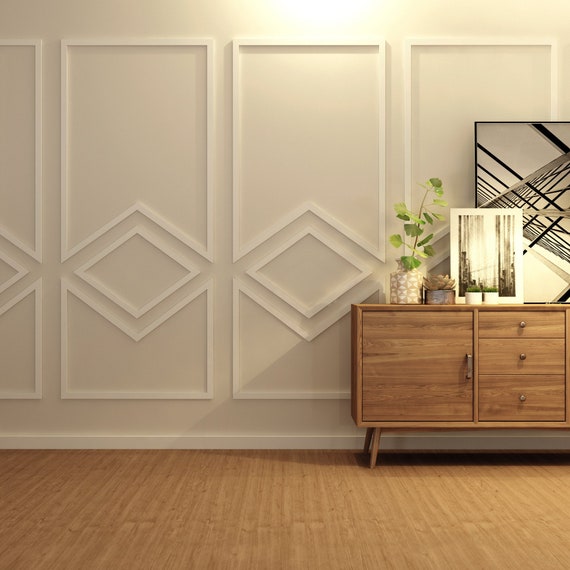Decorative wall molding is more than just an architectural detail; it’s a versatile design element that can completely transform the feel of a space. As someone who has taken on numerous home improvement projects, I’ve come to appreciate how a simple addition like wall molding can enhance the aesthetic appeal of any room. In this guide, we’ll delve into the many facets of decorative wall molding, including types, installation tips, benefits, and everything in between. Let’s journey together into the world of wall molding!
What is Decorative Wall Molding?
Decorative wall molding, often referred to as trim or casing, is a decorative feature that outlines walls, ceilings, doors, and windows. Its primary purpose is to add character and elegance to a space. It comes in various styles, sizes, and materials, allowing you to customize your interior design to align with your personal tastes.
Brief History of Wall Molding
The use of wall molding dates back to ancient civilizations where handcrafted moldings adorned temples and important buildings. The Romans, known for their stunning architecture, utilized elaborate moldings to accentuate their structures. Over the centuries, decorative wall molding evolved, influencing various styles such as Victorian, Colonial, and modern designs.
Types of Decorative Wall Molding
When it comes to decorative wall molding, there are several types to choose from, each with its unique charm. Here, we’ll explore the most popular options.

Crown Molding
Crown molding is installed where the walls meet the ceiling. This type of molding can create an impression of height and elegance, making it a popular choice for living rooms and dining areas. It comes in various styles, from simple to ornate.
Baseboard Molding
Baseboard molding runs along the bottom of the wall, providing a finished look and protecting walls from wear and tear. It can be customized in height and design, making it suitable for any space.

Chair Rail Molding
Chair rail molding is placed about a third of the way up the wall. Historically, it was used to protect walls from chair backs, but today it serves as a decorative element to create visual interest.
Panel Molding
Panel molding is used to create a frame around a wall or to form raised or flat panels. This style can add depth and character, making it perfect for formal dining rooms or grand hallways.

Casing Molding
Casing molding is used around doors and windows to provide a finished look. It comes in various styles and can be combined with other moldings for a more detailed appearance.
Materials Used in Decorative Wall Molding
The material chosen for decorative wall molding greatly affects both its durability and aesthetic appeal. Here’s a breakdown of common materials:

| Material | Pros | Cons |
|—————–|—————————————-|—————————————-|
| Wood | Durable, can be painted or stained | Can warp or crack over time |
| MDF | Smooth finish, economical | Less durable than wood |
| Polyurethane | Lightweight, resistant to moisture | Can be more expensive |
| Plaster | Traditional look, can be molded | Labor-intensive to install |
Benefits of Decorative Wall Molding
Adding decorative wall molding to your home can provide numerous benefits:
- Aesthetic Appeal: Instantly elevate the look of any room.
- Value Addition: Enhances property value, making homes more appealing to potential buyers.
- Versatility: Available in a variety of styles to match any design theme.
- Conceals Imperfections: Hides any flaws where walls meet ceilings or floors.

How to Choose the Right Wall Molding for Your Space
When selecting wall molding, consider the following factors:
1. Style of Your Home
Consider the architectural style of your home. For instance, traditional homes may benefit from ornate Victorian moldings, while modern homes may look best with sleek, simple designs.

2. Room Size
In smaller rooms, opt for thinner moldings to avoid overwhelming the space. In larger rooms, broader profiles can create an impressive focal point.
3. Color Scheme
Choose a color that complements your existing decor. White is timeless, but bold colors can make a statement.
Installation Tips for Decorative Wall Molding
Installing wall molding can be a fulfilling DIY project. Here are some tips to ensure your installation goes smoothly:
Tools You’ll Need
- Measuring tape
- Miter saw
- Nail gun or hammer and finishing nails
- Level
- Caulk and caulking gun
- Paint or stain (optional)
Step-by-Step Installation Guide
- Measure and Plan: Measure the walls where you’ll be installing the molding and plan the layout.
- Cut the Molding: Using a miter saw, cut the moldings at a 45-degree angle for corners.
- Attach the Molding: Use a nail gun or hammer to secure the molding in place.
- Fill Gaps: Use caulk to fill any gaps between the molding and the wall.
- Finish the Look: Paint or stain the molding as desired for a finishing touch.
Pros and Cons of Decorative Wall Molding
Like any home improvement feature, decorative wall molding has its advantages and disadvantages:
Pros
- Enhances the overall look of a room.
- Offers protection for walls and adds value to your home.
- Available in various styles and materials.
Cons
- Can be expensive, depending on materials and complexity.
- Installation may require carpentry skills.
- Updating or changing decor may necessitate removal or repainting.
Cost Considerations for Decorative Wall Molding
The cost of decorative wall molding can vary widely based on material, style, and installation complexity. Here’s a rough breakdown:
| Material | Average Cost per Linear Foot | Installation Cost Estimate |
|—————-|—————————–|—————————-|
| Wood | $1.50 – $3.00 | $2.00 – $4.00 |
| MDF | $0.50 – $1.50 | $1.00 – $2.00 |
| Polyurethane | $1.00 – $2.50 | $2.00 – $4.00 |
| Plaster | $3.00 – $5.00 | $5.00 – $10.00 |
Personal Experience: My Journey with Decorative Wall Molding
When I first decided to install decorative wall molding in my home, I felt both excitement and apprehension. After researching various types and materials, I settled on classic crown molding for my living room. The installation process was a bit challenging, especially when it came to cutting the angles correctly. However, the moment I finished and stepped back to admire my work, I was thrilled! The molding added warmth and sophistication to the space I never knew was missing.
FAQs about Decorative Wall Molding
1. Can decorative wall molding be painted?
Yes! Decorative wall molding can be painted or stained to match your decor. Make sure to use paint suitable for the material you’ve chosen.
2. What’s the difference between crown molding and baseboard molding?
Crown molding is installed at the junction of the wall and ceiling, while baseboard molding runs along the bottom of the wall, protecting it from damage and adding finishing touches.
3. Is it easy to install molding yourself?
With the right tools and some patience, many homeowners can install decorative wall molding themselves. However, it requires precision, especially for cutting angles.
4. How do I maintain decorative wall molding?
Regular dusting and occasional touch-ups with paint or stain will keep your wall molding looking fresh. Avoid harsh chemicals that may damage the finish.
5. Can I mix different types of wall molding?
Absolutely! Mixing different styles and types of molding can create a visually interesting and unique design, especially when used thoughtfully.
Conclusion: Elevate Your Home with Decorative Wall Molding
Decorative wall molding is an elegant, versatile addition to any home that can enhance both aesthetic appeal and value. Whether you opt for classic crown molding, understated baseboards, or intricate panel moldings, your choices can reflect your unique style. I hope this guide has inspired you to consider decorative wall molding for your space. With a bit of planning and creativity, you can transform your home into a stunning showcase of design!